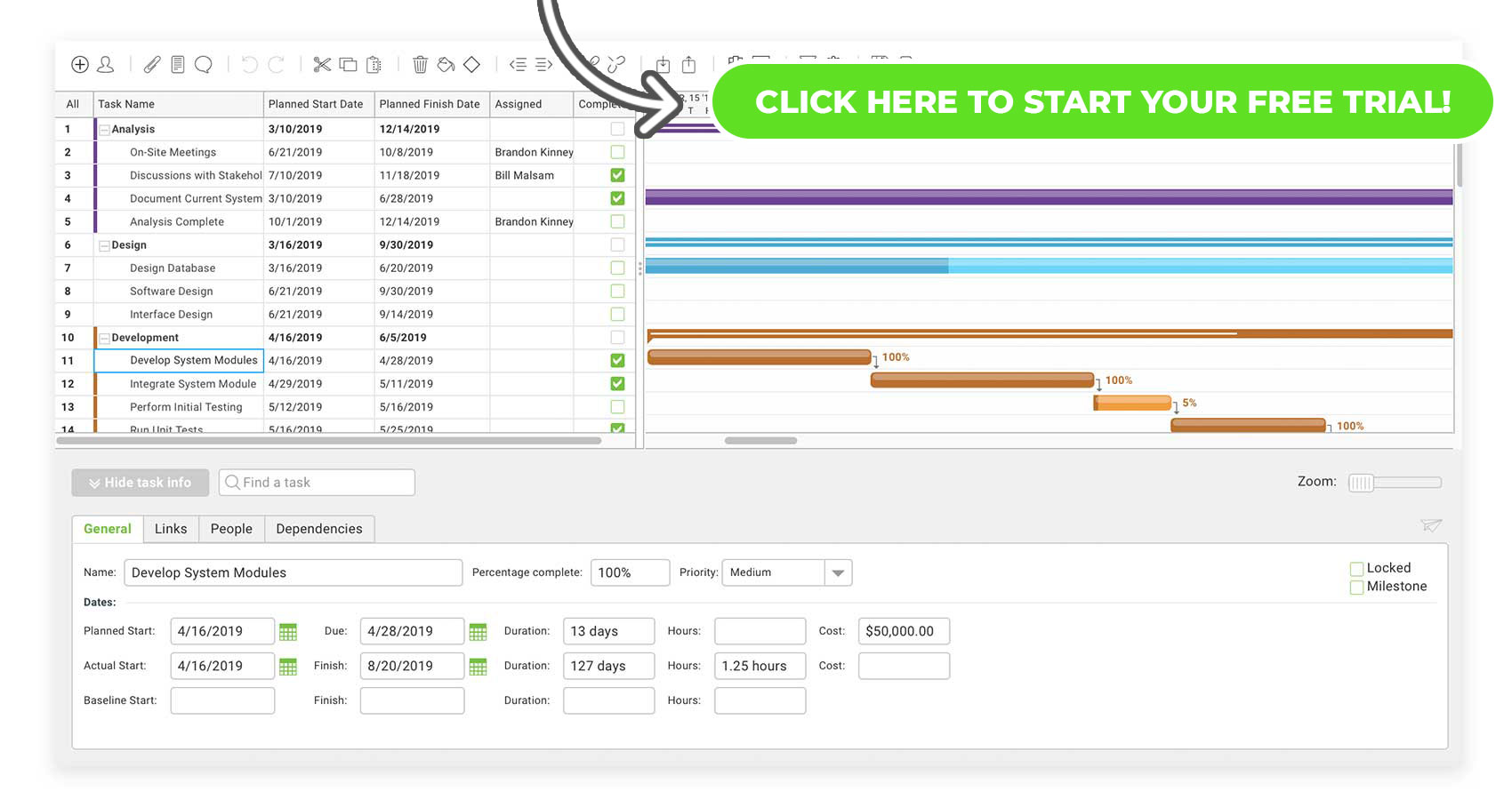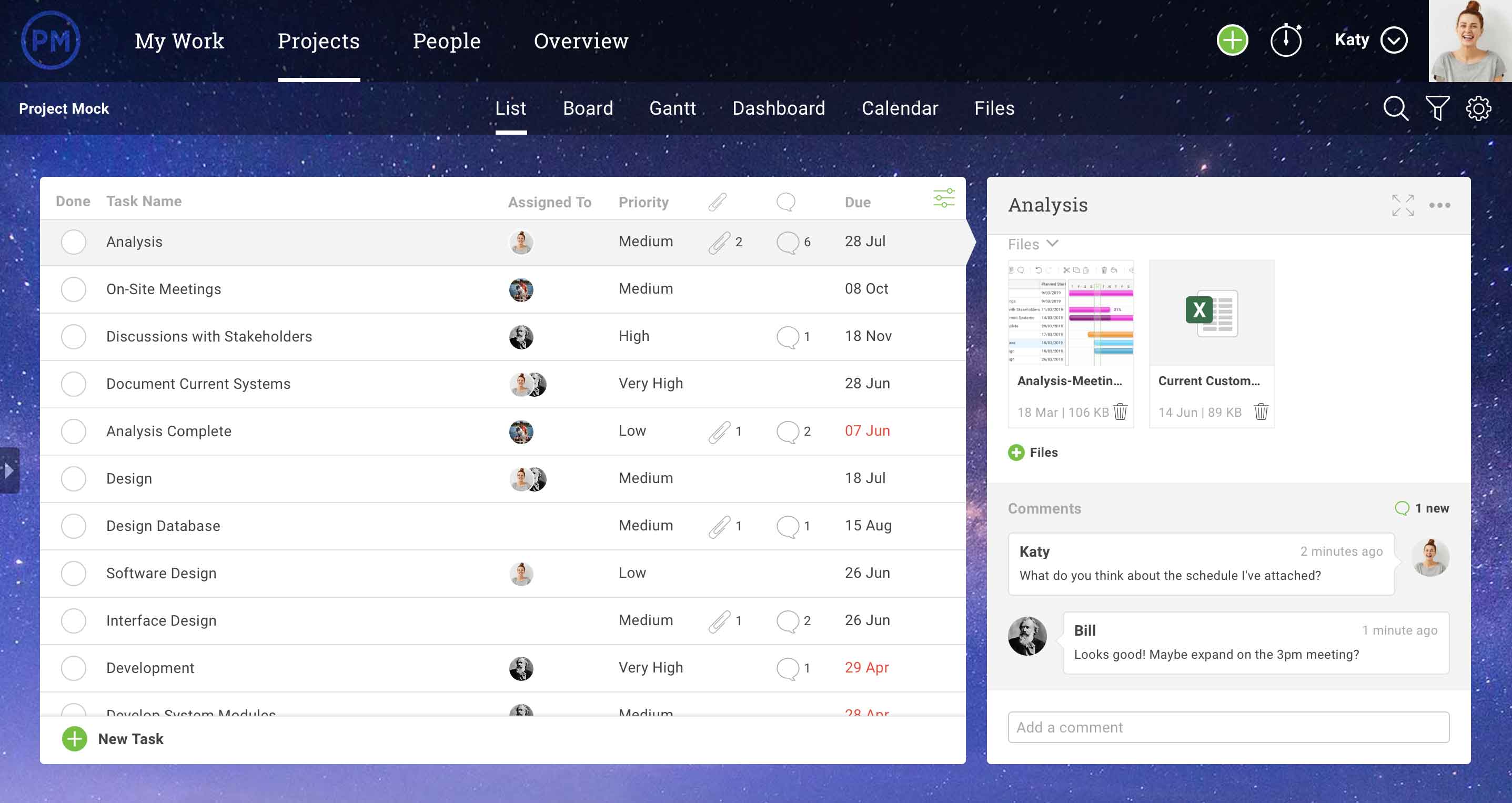Say your organization is building a new distribution center. This new distribution center is reportedly going to bring hundreds of new jobs, and it will include forklifts, certified personnel, a new HR staff and hundreds of thousands of dollars in new equipment. But without insight from all sides—your customer support specialists, stakeholders, team members and customer base—how will you know what’s required to make that distribution center a success?
That’s why requirements management is such an important thing to master, as it’s imperative to the success of a project in the long-term.
What Are Requirements?
In project management, requirements are a group of tasks or conditions that must be completed to finish the project successfully. It can include product features, behaviors, services or even processes. The purpose of these requirements is to ensure that resources and the company’s long-term goals are aligned at the end of the project.
An example of this can be seen when a company is integrating a new customer relationships management (CRM) tool, like Salesforce, Microsoft Dynamics or Quickbooks. Requirements for the integration of a major CRM tool might include multiple teams, such as sales, accounting and marketing, and would require an overhaul of processes, data and systems.
In general, requirements can be categorized in three ways: business requirements, solution requirements and stakeholder requirements.
Business Requirements
Business requirements are the overall needs of the business for making the project happen. Requirements that fall into this category are more foundational, long-term needs that align with the long-term goals of the organization.
Solution Requirements
Solution requirements are more product-focused and drill down a little deeper. They can be functional or non-functional, and ensure that the end result of the product satisfies both what the product needs to do, and also what the product should do.
Related: How to Write Effective Project Objectives Every Time
Like our example above, solution requirements might include a functional requirement, like the implementation of the proper tools that the sales team needs to get their job done with the new CRM. A non-functional requirement would be if the CRM tool also included a content marketing calendar to assist the marketing team as well, but it isn’t necessarily a need.
Stakeholder Requirements
Stakeholder requirements describe your key personnel that sign off on milestones, produce the work, finalize deliverables and more. Sometimes they can be customers, team members, business partners or key leadership. It requires a tenacious project manager to make sure that the requirements of all stakeholders involved are well-balanced throughout the entirety of the project. It is essential for good stakeholder management.
How Do I Effectively Gather Requirements?
Listing out your requirements early can act to break down a wall of communication between the user and the developer, the stakeholder and the team member, and the company and the customer. So let’s discuss the process of gathering those requirements.
Requirements Elicitation
As with any well-mapped project, you’re going to start the planning process by interviewing and investigating the requirements and project needs of others. This could be a run-down of your entire stakeholder list, the customer support team, the sales associates and their needs or your actual customers. This process is called requirements elicitation and is the first step to gathering requirements for your project. Use our free requirements gathering template to get started.
Requirements Documentation and Understanding
Write down everything, and document the product specifications so that other team members can have an understanding of the project scope from the outset. This part of the process is called requirements documentation and understanding, and the more detailed you can get, the better.
Communicate Early and Often
Make your requirements documentation super easy to translate across departments. Even if they never had a meeting with you, they should clearly understand the project requirements and scope from the get-go. Include updated notes from stakeholders and internal meetings as well, so that every person involved feels as if they have project buy-in as they watch the updates unfold.
Understand Your Assumptions
If you understand your assumptions within your project, you can better balance the requirements within. Assumptions are typically wrapped around three things: time, budget and scope. Assumptions while managing your requirements can look like:
- Forgetting to factor in holidays, PTO and sick leave
- Failing to consider whether or not tools are operational or in need of repair
- Assuming that stakeholders will provide feedback during milestones in a timely manner
Monitor and Track Requirements
Throughout the entirety of your project, make sure that you’re monitoring and tracking your requirements across all team levels, ensuring that risk stays low throughout each phase. You’ll also be able to use this data to ensure that the project is on track from a time, scope and budgetary standpoint, so you can report your findings to key stakeholders when it comes time to review milestones.
Steps for Effectively Managing Requirements During Project Execution
Requirements aren’t typically managed from one department in an organization; they’re managed from strategic planning to portfolio management, program management, project management and continuous improvement departments.
The benefits of managing your requirements over the course of the entire project is five-fold: it helps reduce costs, can improve project quality, helps decrease the time it takes to complete the project, decrease risks and can make your scope management plan effective.
That’s why it’s important to have a requirements management plan—or RMP. This plan typically includes the following checklist:
- Stakeholder roles and responsibilities: Have these roles been identified? For each task, has there been an owner assigned to monitor risk and manage the day-to-day?
- Requirements management process: Have they been elicited, documented and understood across all departments and stakeholders?
- Define your requirement types: What are the functional and non-functional requirements?
- Map your requirement artifacts: This can include supplemental documents for stakeholder review.
- Prioritize requirements: Not every requirement is of equal importance. If one requirement has many dependencies, then it moves higher on the list to ensure it doesn’t hold up a number of other tasks. But if it’s a standalone need? Then it can be deprioritized.
- Make it traceable: By far one of the top components to good requirements management is traceability. Tracing your requirements gives stakeholders and team members insight into why the requirement exists, what changes have been made, and if the requirement is complete.
- Incorporate a numbering or versioning system: This is to help both stakeholders and team members get a gauge on how many revisions have occurred at each milestone and ensure that the latest one is always the one being worked on.
- Develop a communication plan: As we previously mentioned, it’s best to be as transparent as possible and document everything. This will help when it comes time to review where the project did the best and where hiccups were experienced. A communication plan can also encourage employee buy-in, as well as manage expectations for both stakeholders and team members.
How Do I Ensure Requirements Have Been Met?
It’s important that you review the project with stakeholders at each milestone and also at the very end. Do a post-mortem review where you go over your interview questions and your project closure checklist to gather final information. You can also throw in additional questions to get new information. This can include:
- Did you feel the project process went smoothly? Yes or no?
- What could have been improved during this project process?
- What did you learn from this project process?
- What do you recommend we include in projects in the future?
At the end of the project, it’s all about traceability. If you can look back at a requirement and see all the changes it went through and how it was completed, you and your team can gauge whether or not it was actually a genuine solution. You can also learn if it has any related non-functional requirements.
Understanding the outcome of the project and its requirements revolve around managing traceability throughout the project lifecycle, so you can thoroughly review it thereafter.
How Can ProjectManager.com Help with Requirements Management
The key to any great project is to have no surprises. With requirements management, the goal is just that: to create an environment where communication is the name of the game, and everyone is on the same page, so surprises are limited. ProjectManager.com has tools that make that not only possible, but simple.
With our cloud-based Gantt charts, you and your team can see the entire project plan from one view, including all of its dependencies. Need to edit a requirement? Our Gantt charts are easy to edit and can accommodate any changes, making it totally traceable.

ProjectManager.com is great for teams looking to communicate with more transparency across the board. With multiple views like Gantt charts, kanban boards and task lists, you can collaborate easily by featuring comments from key stakeholders or team members. Plus, when one team member updates a task, notifications are sent to the right people at the right time.

Managing requirements across multiple teams is no easy feat. Confirm that all involved in your project are on the same page, no matter what. ProjectManager.com is an award-winning software committed to helping teams collaborate effectively across multiple platforms. Sign up for our free 30-day trial today.
No comments:
Post a Comment